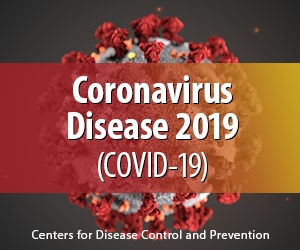Learn more about what it is, what the symptoms are and how to reduce your risk.
According to the Centers for Disease Control and Prevention (CDC), Coronavirus Disease 2019 (COVID-19) is a virus identified as the cause of an outbreak of respiratory illness first detected in Wuhan, China. This flu-like virus is very serious and contagious.
Know the symptoms involved:
- Fever
- Cough
- Shortness of breath
Similar to influenza, people at a serious risk for developing COVID-19 are those who suffer from chronic disease and weakened immune systems. Older demographics are also at a more serious risk.
Health experts recommend practicing the following:
- Wash hands with soap and water frequently.
- Clean and disinfect any surfaces you frequently touch.
- Always cover your nose and mouth when sneezing or coughing with a tissue, and then throw the tissue away and wash your hands.
- Stay home when you’re feeling sick.
- Avoid close contact of any kind with sick individuals.
- Avoid touching your eyes, nose and mouth.
Virtual care
We recommend using virtual care for minor symptoms. Virtual care allows you to see a doctor without having to leave home, and is an alternative to urgent care or the ER. Both urgent care and ER locations can become crowded during peak illness periods and are generally more expensive per visit, depending on your health plan. Virtual care is also a good way to help prevent the spread of infections like COVID-19 and influenza. Check with your doctor’s office or health insurance provider to see if they offer virtual care. You can also download the app or log in to your member account to access virtual care options.
Keep up with changing information from the CDC here.
What if I am experiencing symptoms?
Right now, testing for COVID-19 needs to be ordered by a doctor or other health care provider and must be deemed medically necessary.
Virtual screening and COVID-19 test self-scheduling is available through MyChart.
COVID-19 resources
- COVID-19 information
- Vaccine resources
- Test resources
- Virtual care
- Find coverage
- Frequently asked questions
- Financial relief
- Prescription drug options
More information
For more answers, visit our frequently asked questions and information pages.

